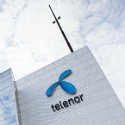
It is easy to mix up Sweden's Telia and Norway's Telenor, and not just because they have similar names. Both are Nordic, with comparable footprints in that region. Both have expanded into Asian markets, with mixed fortunes. Both were caught up in a corruption scandal in Uzbekistan, when affiliates bribed Gulnara Karimova, the dodgy daughter of former dictator Islam Karimov, to secure telecom licenses.
But in Norway's mobile market, where Telenor is the incumbent and Telia the number two, they are at markedly different stages in their 5G planning. Telia has just handed a big network contract to Ericsson, an equipment vendor that also hails from Sweden. Starting next year, its job will be to build a nationwide 5G network in four years. As part of that project, it will be tearing out 4G equipment provided by Huawei, a controversial Chinese competitor, and replacing that with its own gear.
Telenor, by contrast, has yet to choose a 5G supplier (or suppliers). The natural choice would be Huawei, which reportedly provides all of Telenor's existing mobile equipment after signing a landmark deal to replace other vendors back in 2009. But government concerns about the Chinese vendor, deemed a security threat by Western opponents, delayed any decision. In the past few weeks, reports that Norwegian authorities will not interfere with operators' supplier decisions would seem to make Huawei the firm favorite.
In the meantime, however, Telenor has been carrying out 5G trials with Huawei as well as other vendors. At its headquarters in Fornebu, near Oslo, it is using two 5G basestations, one provided by Ericsson and the other by Huawei. The Huawei basestation is compatible with the 26GHz frequency band, while Ericsson's runs on 3.6GHz -- the range more suited to providing wide-area coverage.
What explains Huawei's ascendancy in Telenor's mobile network? According to John Strand, the CEO of advisory group Strand Consult, its rise was part of a European landgrab that happened in the 4G era. By offering knockdown prices for new equipment supporting all the generations of mobile technology, the Chinese vendor was able to dislodge its European rivals, he says. "Huawei went in and bought market share. They said we can offer new basestations all over the country and you don't have to increase your capex and we'll do a network swap."
But despite the Norwegian government's apparent resistance to US anti-Huawei pressure, sticking with Huawei as a single supplier will be difficult. A resurgent Ericsson, for one thing, has adopted Huawei's tactics in a 5G counterattack. In a bid for market share, it is prepared to sacrifice some profitability by offering to replace another vendor's 4G gear, thereby guaranteeing interoperability with new 5G equipment. This strategy helped snag the Telia contract. Ericsson has also had success against Huawei in Denmark and Argentina.
Telcos including Telenor have also grown more resistant to single-supplier contracts in a rapidly consolidating equipment market. That partly explains the interest in virtualization and software-based networks, which should (in theory) make it easier to mix and match suppliers.
Want to know more about 5G? Check out our dedicated 5G content channel here on
Light Reading.
Bucking that trend, Telia has opted for a mobile network built entirely by Ericsson in Norway. But Jorgen Rostrup, Telenor's chief financial officer, talked of "dual-vendor principles" on the technology and operations side of the business when asked about his company's approach to partnerships during a phone call with analysts this week. An all-Huawei network deal would seem at odds with those remarks.
Of course, Nokia cannot be ruled out. The Finnish vendor is also reported to have been in 5G trials with Telenor and will not want to miss out on commercial opportunities in Europe. Telia's single-supplier deal with Ericsson might persuade Telenor to look more seriously at an alternative vendor. And Nokia has a much broader portfolio of network goodies it can dangle to secure a deal. A contract that bundles radio and optical equipment, say, could look very enticing.
No doubt, handing 5G work to Huawei would be less disruptive, and the Chinese vendor seems unlikely to vanish entirely. In Telia's case, it was providing 4G equipment only in some areas, with Ericsson responsible for most of the network. Operators in other markets have grumbled about the cost and hassle of swaps, resisting pressure to substitute European for Chinese vendors. But Telenor has executed a major swap before, when it was seduced by Huawei in 2009. If Ericsson promises to pick up the bill, it may be an offer that is too good to refuse.
Related posts:
— Iain Morris, International Editor, Light Reading
About the Author(s)
You May Also Like












